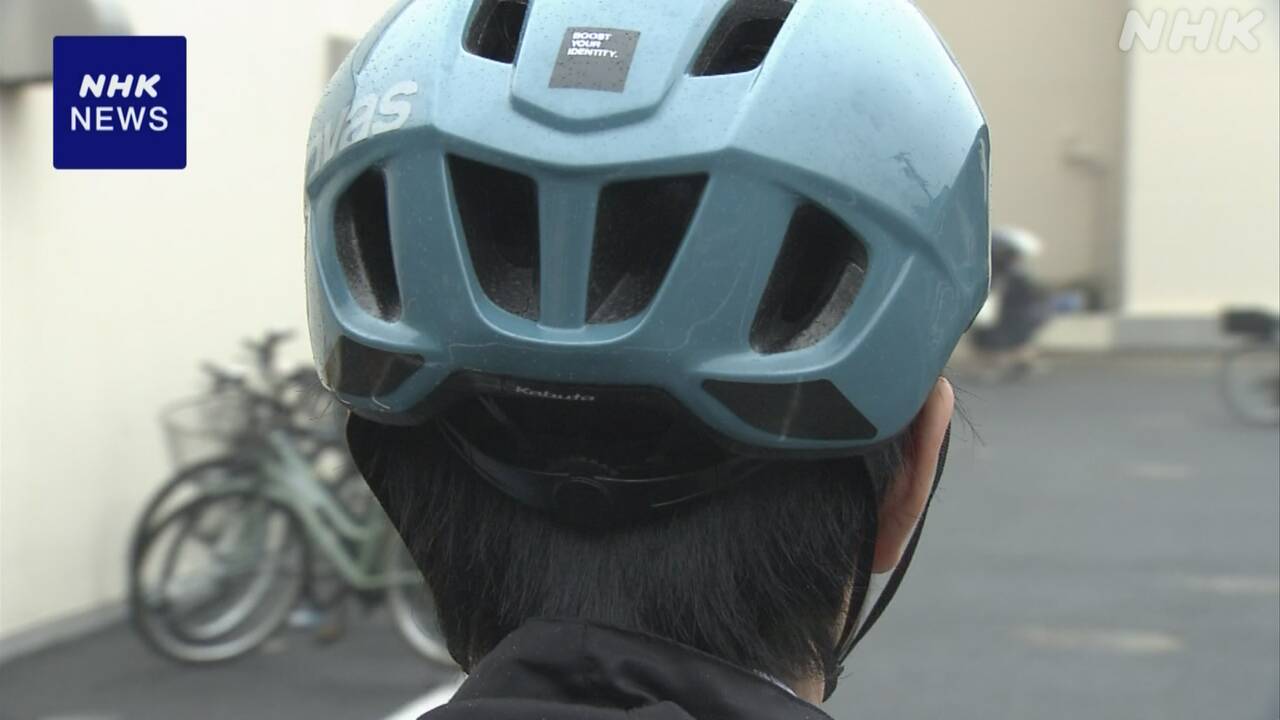It will soon be one year since it became compulsory for everyone who rides a bicycle to wear a helmet. As the low rate of wearing helmets becomes an issue, starting in the new school year, Tokyo metropolitan high schools will require students to wear helmets as a condition for commuting by bicycle.
Due to the revision of the Road Traffic Act, starting from April last year, it became compulsory for everyone riding a bicycle to wear a helmet.Although the Metropolitan Police Department and other organizations are promoting awareness by holding traffic safety classes in various places, it is still not recommended to wear a helmet in Tokyo. The low rate is a problem.
Approximately 55,000 high school students, or approximately 45% of students at metropolitan high schools, are commuting to school by bicycle this year, but according to the Tokyo Metropolitan Board of Education, as of November last year, only 5.5% of students were using bicycles. It means that it remains in moderation.
In response to this, the Tokyo Metropolitan Board of Education issued a notice requesting metropolitan high schools to add the wearing of helmets as a condition for allowing students to commute to school by bicycle, and the implementation will begin in the new academic year.
At each school, we are working with the police station to ensure that this policy is widely adopted, such as by instructing students to wear helmets when commuting to and from school.
Kenji Kato, chief instructor in charge of safety education at the Tokyo Metropolitan Agency for Education, said, ``I believe that wearing a helmet correctly will lead to a safe commute to school.I want students to be aware that wearing a helmet is a matter of course in order to protect their own lives.'' I want to,” he said.
Bicycle accident rate in Tokyo is twice the national average, helmet wearing rate is sluggish
According to the Metropolitan Police Department, 46% of traffic accidents that occurred in Tokyo last year involved bicycles, which is approximately twice the national average.
The rate of wearing helmets is also sluggish, and as of January this year, the rate of helmet use in Tokyo was 9.1%, which is lower than the national average.
Approximately 64% of people who died in bicycle accidents in Tokyo in the five years up to last year sustained fatal head injuries, and the fatality rate for those not wearing a helmet was approximately 2.7 compared to those wearing a helmet. That means it's twice as expensive.
The Metropolitan Police Department says, ``The rate of bicycle helmet wearing in Tokyo is still low. Protecting your head can save lives, so please wear one.''
High schools promoting helmet awareness
At Shinozaki High School in Edogawa Ward, Tokyo, approximately 90% of the 800 students commute to school by bicycle.
In April of last year, the wearing of bicycle helmets became compulsory, and the student council created an original video to convey the safety of helmets, and students on the soccer club took the initiative in wearing them. Students themselves have asked them to wear them.
According to the school, almost no students wore helmets when commuting to school last April, but now approximately 40% of students do so.
In response to a notice from the Tokyo Metropolitan Board of Education, the school has decided to clearly state that students are required to wear a helmet on their permission to commute to school by bicycle starting in the new school year, hoping that this will further increase students' safety awareness. I am.
Principal Shizuo Kubo said, ``Some people say they should do it because everyone else is wearing one, and others say they don't want to wear one because it gets stuffy in the summer.''We want to take this opportunity to convey the importance of wearing helmets.'' .

